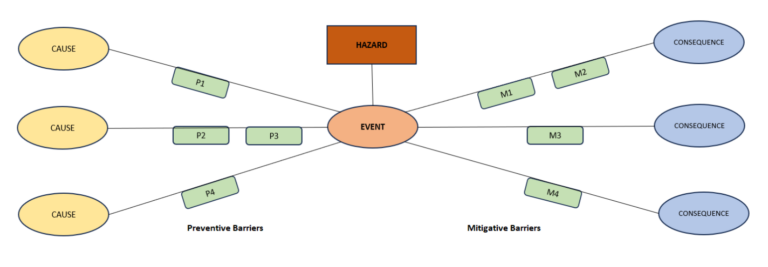The Reality Of Airplane Accidents: Visualizing Risk And Safety Measures

Table of Contents
The Statistical Reality of Airplane Accidents
Accident Rates vs. Perception
The probability of being involved in a plane crash is incredibly low compared to other forms of transportation. While the media often focuses on airplane accidents, the statistical reality paints a different picture. Data from the International Air Transport Association (IATA) and the Federal Aviation Administration (FAA) consistently demonstrate the exceptional safety record of air travel.
- Comparing Accident Rates: When considering accidents per passenger mile, air travel is significantly safer than car travel. The difference is staggering, highlighting the effectiveness of safety protocols in aviation.
- A Decreasing Trend: The number of air accidents per year has been steadily decreasing over the past several decades, reflecting improvements in technology, regulations, and pilot training. This demonstrable trend further emphasizes the enhanced safety of air travel.
- Media Influence: The media's tendency to heavily report on plane crashes, due to their newsworthiness, can disproportionately influence public perception. This sensationalized coverage can create a skewed understanding of the actual risk involved in air travel.
Causes of Airplane Accidents
Despite the high safety record, airplane accidents do occur. Understanding their causes is crucial for continuous improvement in aviation safety. Major contributing factors include:
- Pilot Error: Human error remains a significant factor in many air crashes. This can involve loss of control, improper decision-making in challenging situations, or failure to adhere to established procedures.
- Mechanical Failures: Mechanical issues, such as engine failure, structural defects, or system malfunctions, can also lead to accidents. Rigorous maintenance and inspection protocols aim to mitigate this risk.
- Adverse Weather Conditions: Severe weather, including turbulence, icing, and storms, presents significant challenges to flight safety. Pilots are trained to handle these conditions, and advanced weather forecasting helps to minimize risks.
- Air Traffic Control Issues: While rare, errors in air traffic control can contribute to accidents. Strict regulations and advanced technologies aim to minimize these risks.
Visualizing Risk: Understanding Probability
Data Visualization Techniques
Effective data visualization is essential for understanding the low probability of airplane accidents. Charts and graphs can effectively communicate the statistical reality.
- Illustrating Rarity: Bar charts comparing the number of fatal air accidents to the total number of flights illustrate the rarity of such events.
- Demonstrating Effectiveness: Line graphs showing the decreasing trend of air accidents over time demonstrate the impact of safety regulations and technological advancements.
Misinterpretations of Data
Common misconceptions arise from misinterpretations of data surrounding airplane accidents. The media plays a significant role in shaping perceptions.
- Survivor Bias: Media reports often focus on the dramatic aspects of accidents, potentially leading to a biased perception of risk.
- Sensationalized Coverage: Sensationalized news coverage disproportionately emphasizes the negative events, ignoring the overwhelming number of safe flights.
- Critical Thinking: It's crucial to approach information about airplane accidents with critical thinking, considering the context and sources of the data.
Comprehensive Safety Measures in Aviation
Technological Advancements
Technological advancements have played a crucial role in enhancing flight safety.
- Flight Data Recorders (Black Boxes): These devices record vital flight information, providing invaluable data for accident investigations and safety improvements.
- Traffic Collision Avoidance System (TCAS): TCAS warns pilots of potential collisions with other aircraft, significantly reducing the risk of mid-air accidents.
- Advanced Weather Forecasting: Improved weather forecasting and reporting allows pilots to make informed decisions and avoid hazardous weather conditions.
Regulatory Oversight and Training
Strict regulations and rigorous training programs are fundamental to aviation safety.
- Aviation Authorities (FAA, EASA): Organizations like the FAA and EASA establish and enforce strict safety regulations, ensuring high standards across the industry.
- Pilot Training: Pilots undergo extensive training, including recurrent training to maintain proficiency and stay updated on safety procedures.
- Safety Audits and Inspections: Regular safety audits and inspections of aircraft and facilities ensure that safety standards are consistently maintained.
Conclusion
Airplane accidents are statistically rare, despite the perception of high risk. Comprehensive safety measures, technological advancements, and rigorous regulations contribute significantly to the exceptionally high safety record of air travel. By understanding the reality of airplane accidents and the robust safety measures in place, you can travel with greater peace of mind. Learn more about aviation safety and the measures taken to ensure your safety during your next flight. Continue researching airplane accidents statistics and safety measures to make informed decisions about air travel.

Featured Posts
-
 Ot Evroviziya Do Dnes Promyanata V Zhivota Na Konchita Vurst
May 24, 2025
Ot Evroviziya Do Dnes Promyanata V Zhivota Na Konchita Vurst
May 24, 2025 -
 Escape To The Country Things To Consider Before You Move
May 24, 2025
Escape To The Country Things To Consider Before You Move
May 24, 2025 -
 7 Elevens New Vegan Menu A Collaboration With Londons Odd Burger
May 24, 2025
7 Elevens New Vegan Menu A Collaboration With Londons Odd Burger
May 24, 2025 -
 Euronext Amsterdam Sees 8 Stock Increase Impact Of Trumps Tariff Decision
May 24, 2025
Euronext Amsterdam Sees 8 Stock Increase Impact Of Trumps Tariff Decision
May 24, 2025 -
 Is Kyle Walker Peters Headed To West Ham United
May 24, 2025
Is Kyle Walker Peters Headed To West Ham United
May 24, 2025
Latest Posts
-
 Today Show Host Dylan Dreyer Details Of A Near Disaster
May 24, 2025
Today Show Host Dylan Dreyer Details Of A Near Disaster
May 24, 2025 -
 Dylan Dreyer And Brian Fichera A Look At Their Relationship
May 24, 2025
Dylan Dreyer And Brian Fichera A Look At Their Relationship
May 24, 2025 -
 Dylan Dreyer And The Today Show A Close Call You Wont Believe
May 24, 2025
Dylan Dreyer And The Today Show A Close Call You Wont Believe
May 24, 2025 -
 The Today Show Dylan Dreyers Unexpected Hosting Challenge
May 24, 2025
The Today Show Dylan Dreyers Unexpected Hosting Challenge
May 24, 2025 -
 Dylan Dreyers Health And Fitness Journey A Today Show Success Story
May 24, 2025
Dylan Dreyers Health And Fitness Journey A Today Show Success Story
May 24, 2025
